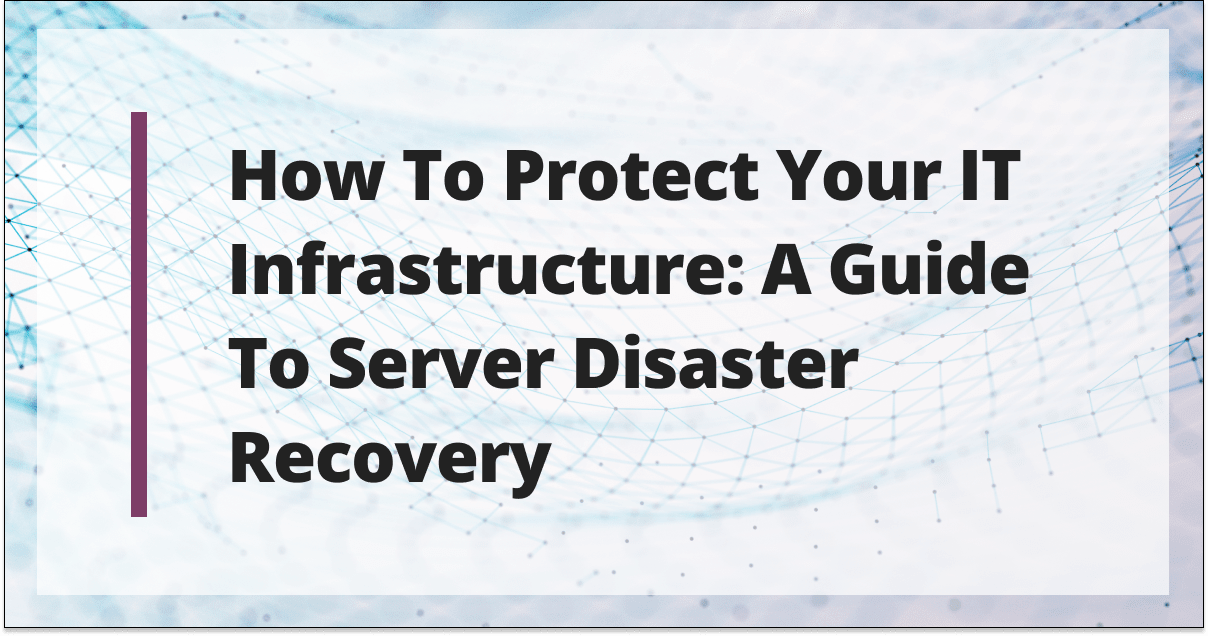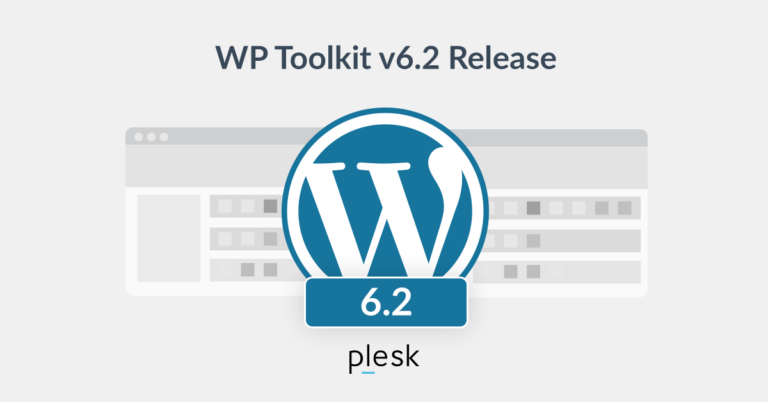
Have you ever wondered what would happen if your business experienced a server disaster? Or are you looking to prevent such an incident from occurring in the first place?
From the smallest startups striving for their breakthrough moments to the multinational giants managing vast global operations, the security and reliability of your servers are the keystones of your success.
Yet, as innovation and progress go hand in hand with uncertainty, unforeseen disasters can negatively impact your online business. Whether it’s data corruption, hardware failure, or natural catastrophes, the threat to your IT systems is ever-present.
In the face of these challenges, the concept of server disaster recovery rises as a guardian of your digital realm. With this in mind, this comprehensive guide is designed to help you plan for the unexpected by detailing effective recovery strategies, innovative solutions, and actionable resources to build a robust and resilient IT infrastructure.
By the end of this article, you’ll be able to navigate the complexities of server disaster recovery and ensure your business can handle any disaster that comes its way!
Understanding server disaster recovery: The basics
Server disasters can strike at any time, and they often come without warning. From hardware failures and data corruption to natural disasters and cyberattacks, these events can devastate your business.
The key to minimizing these impacts lies in your preparedness and response – that’s where server disaster recovery comes into play.
Server disaster recovery is critical to business continuity planning and data protection. Specifically, it refers to the strategies and procedures businesses implement to recover data and restore normal operations after a disaster strikes their servers.
This could range from natural disasters, like floods or fires, to hardware failures, hacking attempts, or even human error.
The implications of not having a disaster recovery plan can be severe:
- Data loss can result in the loss of essential business information, leading to operational disruptions and potential breaches of compliance regulations.
- Downtime can have a direct impact on a business’s bottom line. In fact, according to a study by Gartner, the average cost of IT downtime is around $5,600 per minute. Depending on the scale and duration of the downtime, this could quickly add up to significant financial losses.
Extended downtime and data loss can seriously damage a company’s reputation, leading to loss of customer trust and potentially long-term harm to the brand.
Despite these risks, a recent study by the Disaster Recovery Preparedness Council found that just over half of organizations have a documented company-wide disaster recovery plan in place. This suggests that many organizations are leaving themselves vulnerable to the potentially devastating effects of a server disaster.
Fortunately, it doesn’t have to be this way. In fact, by investing time and resources into a robust server disaster recovery plan, businesses can prepare for any eventuality.
Such a plan can provide peace of mind, safeguard critical data, and ensure business continuity, even in the face of unexpected disasters.
Key components and steps for a comprehensive server disaster recovery plan
A comprehensive disaster recovery plan is made up of several core elements, each serving a specific purpose in ensuring business continuity and data protection.
Key components of a server disaster recovery plan
- Data backup: This is the process of regularly saving data in multiple locations. To emphasize, backing up your data is the first line of defense in a disaster recovery plan. By having multiple copies of data, you can recover lost data from the most recent backup, minimizing data loss.
- Failover systems: These are systems that automatically switch to a standby system upon failure of the primary system. They are crucial in minimizing downtime during a disaster.
- Recovery Time Objectives (RTO): RTO is the target time within which you aim to restore systems and resume operations post-disruption. It helps businesses understand the maximum allowable downtime before it impacts business operations.
- Recovery Point Objectives (RPO): RPO refers to the acceptable age of files that can be recovered from backups. In other words, it’s the maximum time during which data might be lost due to a major incident.
- Offsite backups/cloud storage: Storing data backups in geographically separate locations or the cloud ensures that data can be recovered even if the primary site is affected by a disaster.
- Testing and drills: Regular testing and drills are vital to ensure the effectiveness of the disaster recovery plan. It helps identify any gaps or weaknesses in the plan and provides a chance to improve and update the plan as needed.
- Communication plan: This involves notifying stakeholders, including employees, customers, and partners, during and after an incident. Clear communication can help manage expectations and reduce panic during a disaster.
- Roles and responsibilities: A disaster recovery plan should clearly outline who is responsible for specific recovery tasks. This ensures a coordinated response during a disaster and helps avoid confusion and delays.
Steps for creating a server disaster recovery plan
Creating a disaster recovery plan is a systematic process that involves the following fundamental steps:
1. Risk assessment
This phase involves identifying potential threats and vulnerabilities that could disrupt your IT infrastructure.
It is an important step that forms the basis for the entire plan, enabling organizations to proactively address potential risks and enhance their overall resilience in the face of disasters or disruptions. This could include:
- Natural disasters.
- Cyberattacks.
- Hardware failures.
- Human error.
Once these risks are identified, they should be evaluated based on their likelihood and potential impact.
2. Business impact analysis
Business impact analysis (BIA) encompasses assessing and understanding the potential impacts of various disruptive events on your organization.
The primary goal of a BIA is to prioritize critical business functions and resources, allowing you to allocate resources effectively and develop a comprehensive disaster recovery plan. It helps you determine the potential consequences of risks based on what matters most to your organization to ensure the continuity of critical operations in the face of unexpected disruptions.
Regularly revisiting and updating the BIA ensures it remains relevant and aligned with your organization’s evolving needs and priorities.
3. Strategy selection
The next step is to select appropriate disaster recovery strategies based on their ability to mitigate the identified risks and ensure business continuity. Here is an overview of some strategies:
Backup and restore
This entails regularly backing up your server data and applications and then restoring them in the event of a disaster, keeping the following deliberations in mind:
- Frequency of backups: Determine how often you need to back up data based on your established RPO. Critical systems may require more frequent backups.
- Storage location: Ensure that you store backups off-site, preferably in a secure data center or cloud environment, to prevent data loss in case of on-premises disasters.
- Testing: Regularly test the backup and restore process to guarantee data integrity and the ability to recover successfully.
High Availability (HA) clustering
HA clustering refers to setting up redundant server systems that work in tandem. If one server fails, another takes over seamlessly, minimizing downtime. Consider the following factors:
- Cost: HA clustering can be costly due to the need for duplicate hardware and specialized software. Assess whether the investment aligns with your business’s budget.
- Complexity: Implementing HA clustering can be complex and may require specific expertise. Ensure your IT team is adequately trained, or consider third-party support.
- Scalability: Determine whether the solution is scalable to accommodate your business’s future growth and increased server demands.
Virtualization and cloud-based solutions
Leveraging virtualization and cloud technologies allows for greater flexibility and scalability in disaster recovery because of the following aspects:
- Cost efficiency: Cloud-based solutions often offer cost advantages, as you can scale resources up or down as needed. Evaluate the Total Cost of Ownership (TCO) compared to on-premises options.
- Geographic redundancy: Cloud providers offer data centers in multiple geographic regions, enhancing redundancy and minimizing the risk of regional disasters affecting your data.
- Data security and compliance: Assess the security measures and compliance standards of your chosen cloud provider to ensure they meet your business’s requirements.
Data center replication
Replicating your server environment in a secondary data center or location provides geographic redundancy. Make sure to explore the following options:
- Location selection: Choose a secondary data center location carefully to minimize the impact of risks such as natural disasters, power outages, or geopolitical instability.
- Data synchronization: Ensure that data replication is continuous and synchronous to minimize data loss in case of a failover.
- Costs and resources: Replicating data centers can be resource-intensive and costly. Evaluate whether it aligns with your budget and infrastructure capabilities.
Managed disaster recovery services
Outsourcing your disaster recovery to a managed service provider, like Liquid Web, can offer expertise and resources. Liquid Web offers the following prominent advantages in this area:
- Clear Service Level Agreements (SLAs): Liquid Web ensures its SLAs are tailored to meet your RTO and RPO requirements. This commitment to customization is accompanied by transparent communication and solid guarantees, making it a crucial aspect of their service.
- Compliance: It is essential to verify that the provider adheres to relevant industry regulations and standards that are applicable to your business. Liquid Web takes compliance seriously, guaranteeing that your data and operations remain within the boundaries of legal requirements and industry-specific standards.
- Testing and support: Liquid Web provides clarity on the frequency of testing in disaster recovery scenarios. Understanding how often these tests occur is vital for maintaining preparedness. Additionally, Liquid Web offers a high level of support during these critical moments, certifying that you have the assistance you need when facing potential disasters.
Ultimately, the choice of strategy depends on your specific business needs, budget constraints, and the criticality of your systems and data. It’s often beneficial to consult with IT professionals and disaster recovery experts to make an informed decision.
4. Plan development
Once you’ve chosen your strategies, it’s time to develop the disaster recovery plan. This should document the procedures to be followed, roles and responsibilities, communication strategies, and recovery steps in the event of a disaster.
5. Testing
After the plan has been developed, it’s imperative to test it. Conduct drills and simulations of various disaster scenarios to assess the plan’s effectiveness. This could include:
- Tabletop exercises, where team members discuss their roles and responses.
- Full-scale simulations that mimic actual disaster conditions.
Also, identify weaknesses or gaps related to procedures, resource availability, or communication breakdowns to effectively refine your recovery scheme.
6. Training
All team members should be educated on their roles and responsibilities within the disaster recovery plan. This ensures that everyone knows what to do in the event of a disaster, reducing confusion and enabling a more efficient recovery process.
7. Maintenance
Finally, it’s important to remember that a disaster recovery plan is not a one-time task. To accommodate changes in the business environment, incorporate the following procedures into your workflow:
- Regular updates: A disaster recovery plan is not a static document. It should be regularly reviewed and updated to reflect changes in the business environment, technology, and potential risks.
- Lesson incorporation: Lessons learned from testing, real incidents, and post-incident analyses should be incorporated into the plan. This continuous improvement process helps the organization adapt and respond better to future disasters.
The role of a hosting provider in disaster recovery
A reliable hosting provider plays a critical role in the disaster recovery of servers, offering vital support and services to help businesses protect their data and maintain operations in the face of server disasters – here’s how:
- Data backup: A hosting provider can offer automated and regular data backups, often with both onsite and offsite storage options. This ensures that a recent copy of your data is always available for recovery.
- Infrastructure redundancy: Hosting providers can also provide infrastructure redundancy, including failover systems, mirrored servers, and redundant data centers. These measures ensure uptime and availability, even when a disaster impacts part of the infrastructure.
- Recovery tools: Hosting providers often supply tools and services that facilitate rapid recovery of data and services after a disaster, which can range from simple backup restoration tools to complex disaster recovery solutions.
- Security measures: A good hosting provider will implement robust security measures to safeguard against threats, including protection against DDoS attacks, malware, ransomware attacks, and breaches, all of which can cause significant downtime and data loss.
- Guidance and support: Hosting providers can also assist customers in developing and implementing their disaster recovery strategies. They also offer technical support during recovery processes, helping businesses get back on their feet quickly after a disaster.
Liquid Web, for instance, meets stringent security standards, making it an excellent choice for healthcare and financial institutions and any other businesses that handle sensitive data.
Overcoming challenges in server disaster recovery planning
While disaster recovery planning is binding for business continuity and data protection, it does come with its own set of obstacles.
- Complexity of IT environments: The intricate nature of modern IT infrastructure, with various applications, platforms, and dependencies, can make the recovery process complex and difficult.
- Budget constraints: Comprehensive disaster recovery can be expensive, and businesses may struggle to allocate sufficient funds for it.
- Regular testing: Disaster recovery plans are only effective if they are regularly tested and updated. However, organizations often neglect this crucial step, leading to plans that become outdated and inadequate for addressing evolving threats and vulnerabilities.
- Changing technologies: As technology evolves, disaster recovery plans can become outdated if they’re not updated to account for new tools or platforms.
- Defining clear RTOs and RPOs: Businesses may find it challenging to set clear recovery time objectives and recovery point objectives that align with actual business needs, as it requires a deep understanding of the organization’s priorities and operations.
- Human factors: Human errors are a common source of failure in disaster recovery efforts. Inadequate training, lack of awareness, or miscommunication can lead to mistakes during both the planning and execution phases of recovery, undermining the effectiveness of the plan.
- Lack of documentation: Not having a well-documented disaster recovery plan can hinder its execution during critical moments.
- Vendor lock-in: Overreliance on a single vendor’s technology or infrastructure can be problematic. If that vendor experiences system issues or if the organization needs to migrate to a different platform, it can impede the recovery process and increase downtime.
- Geographic risks: If backup data centers or storage locations are not geographically diverse, they might be affected by the same disaster across multiple sites simultaneously. Failing to consider geographic diversity can expose the organization to a higher level of vulnerability.
- Regulatory and compliance issues: Different industries have specific regulations and compliance requirements related to data protection and disaster recovery. Ensuring that the disaster recovery process aligns with these standards requires ongoing monitoring and adaptation.
- Coordination across departments: In larger organizations, recovery planning involves multiple departments or teams, each with its own responsibilities and priorities. Coordinating these efforts to ensure a unified and effective recovery strategy can be complex and time-consuming.
- Overlooking non-IT assets: Organizations might focus only on IT systems, neglecting other crucial business assets, such as employee workstations, facilities, or communication tools.
Despite these hindrances, there are solutions available. Leveraging cloud-based disaster recovery solutions can be a cost-effective way to ensure data protection and business continuity.
Outsourcing disaster recovery as a service to professional providers, like Liquid Web, can also help businesses navigate the complexities of disaster recovery planning.
Remember, the goal is not just to plan for disaster recovery but to plan for business resilience.
Exploring disaster recovery strategies with fully managed hosting
When it comes to disaster recovery, there are three key strategies that businesses can adopt to protect their data and uphold uninterrupted operations: backups, replication, and failover.
Strategy 1: Backups
Backups restore data to a point in time following an event that causes data loss, corruption, or unavailability. The frequency of backups can vary from real-time (continuous) to daily, weekly, or even less frequently.
This method is paramount for nearly all organizations to protect against data loss.
Strategy 2: Replication
In this approach, data is continuously copied to another location in real-time or near-real-time. This allows for near-instant recovery of data and ensures high availability.
Modes of replication include:
- Synchronous (real-time, zero data loss).
- Asynchronous (short delay, potential for minimal data loss).
Replication is ideal for mission-critical applications where data loss or downtime can have significant consequences.
Strategy 3: Failover
Failover is an automated process where an IT environment seamlessly transitions to a secondary system or location when the primary system fails. It ensures continuity of service and operations, minimizing downtime.
Types of failover encompass:
- Manual (requires human intervention).
- Automatic (system detects failure and initiates failover).
This strategy is critical for services that require high availability and cannot afford prolonged downtime.
Fully managed hosting providers can significantly ease the burden of implementing these disaster recovery strategies. They can oversee the entire process, from data backups and replication to failover procedures, ensuring that your IT infrastructure is well-protected against potential server disasters.
Whether it’s regular data backups, real-time replication, or automatic failover, Liquid Web’s high-performance hosting solutions are equipped to handle it all. By partnering with Liquid Web, businesses can not only secure their data but also ensure seamless operations, even in the face of server disasters.
Take the next step: Secure your IT infrastructure today
In the digital age, where data is a valuable asset, implementing a comprehensive disaster recovery plan is not just a good practice; it’s a business necessity. Server disaster recovery planning safeguards your business from potential server disasters that could disrupt operations and lead to data loss.
By opting for a fully managed hosting solution, you can greatly simplify this process. Managed hosting providers take on the task of handling data backups, replication, and failover processes, guaranteeing the resilience and full-bodied security of your IT infrastructure. This not only saves you time and resources but also provides peace of mind, knowing that your data and operations are secure.
Liquid Web’s fully managed hosting services offer a comprehensive solution for your disaster recovery needs. With a focus on customization, performance, scalability, and support, Liquid Web is well-equipped to handle the unique server disaster recovery requirements of any business.
Don’t wait for a disaster to strike before thinking about recovery – take action to secure your IT infrastructure. Contact Liquid Web today and guarantee your business’s readiness to face any server disaster with confidence and resilience!





